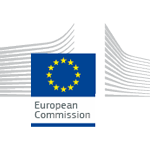Holy Hands
Holy Hands laid the groundwork for an extensive study of knitted liturgical gloves. It researched their survival from the 12th century onwards by scoping out their locations and general characteristics. The team was led by Dr Angharad Thomas in collaboration with researcher Lesley O’Connell Edwards. The Holy Hands team also included Dr Sylvie Odstrčilová, who was instrumental in streamlining the data and developing the KEME database. Dr Jane Malcolm-Davies facilitated the data’s accessibility online via Knitting in Early Modern Europe (KEME) and was a mentor to the project team. Jodie Cox undertook the database development and expansion. The project was funded by Janet Arnold Award via the Society of Antiquaries of London.

The Holy Hands project worked on four aspects of early knitted gloves. These were:
-
A literature search and review conducted by Lesley O’Connell Edwards which brings together all known literature on these textiles. It includes sources in several languages including English, French, German, Dutch, and Spanish. Available to download here.
-
The online KEME database presents the information the research team was able to gather (principally from online sources). Data about 96 pairs of gloves, single gloves, or fragments are available to search using common features such as original colour, embellishments, including embroidery and tassels, and construction. Visit the database here.
-
Holy Hands also developed a protocol for studying, observing and recording knitted gloves in a systematic way to provide an accessible and accurate description of them. The protocol draws on terminology from Malcolm-Davies et al (2019, pages 14-15) to enable consistent use of words for describing knitted items. It also uses the recommended form for recording knitted items or fabrics (pages 14-15). In addition to these established research tools, a bespoke measurement form was developed to ensure accurate recording of all the parts of a glove (or a pair of gloves) for both right and left. A further checklist prompts the researcher to make notes and take photographs of all the constituent parts and characteristics of the glove, including thumb and finger constructions.
-
The feasibility of a citizen science reconstruction project was also researched by recreating some aspects of the gloves: Angharad worked on fingertips and Lesley charted some of the gauntlet patterns (see below for works in progress).



 The Knitting in Early Modern Europe (KEME) project was funded in part by an individual post-doctoral Marie Skłodowska Curie Research Fellowship from August 2015 to July 2017 (grant agreement 656748) awarded by the European Commission. KEME continues with the support of
The Knitting in Early Modern Europe (KEME) project was funded in part by an individual post-doctoral Marie Skłodowska Curie Research Fellowship from August 2015 to July 2017 (grant agreement 656748) awarded by the European Commission. KEME continues with the support of  Marie Skłodowska-Curie Individual Fellowships are awarded to enhance the creative potential of experienced researchers, diversify their technical or scientific expertise, and acquire new interdisciplinary skills through advanced training in another EU country. Dr Jane Malcolm-Davies received a MSC fellowship to work at the Centre for Textile Research, Copenhagen from August 2015 to July 2017.
Marie Skłodowska-Curie Individual Fellowships are awarded to enhance the creative potential of experienced researchers, diversify their technical or scientific expertise, and acquire new interdisciplinary skills through advanced training in another EU country. Dr Jane Malcolm-Davies received a MSC fellowship to work at the Centre for Textile Research, Copenhagen from August 2015 to July 2017.
 Initial research into medieval and early modern gloves was funded by a
Initial research into medieval and early modern gloves was funded by a 